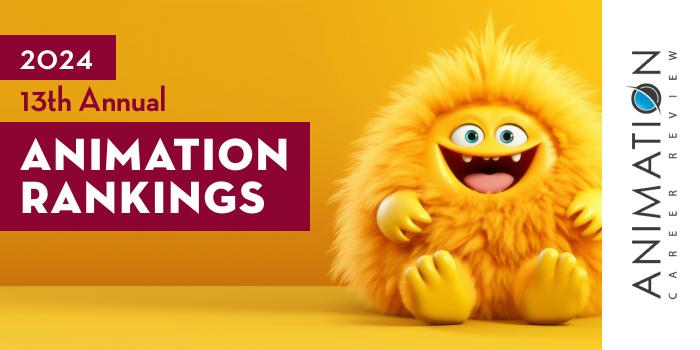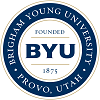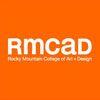
35+ Years of Shaping Entertainment and Pop Culture - From Oscar and GRAMMY-winners, to animators, to creative directors and entrepreneurs, our graduates make significant contributions to their industries. Learn More.

| Ranking | School | State |
|---|---|---|
| 1 | Brigham Young University | Utah |
| 2 | Texas A&M University | Texas |
| 3 | University of Texas at Dallas | Texas |
| 4 | Arizona State University | Arizona |
| 5 | University of Colorado, Denver | Colorado |
| 6 | Rocky Mountain College of Art + Design | Colorado |
| 7 | New Mexico State University | New Mexico |
| 8 | Sam Houston State University | Texas |
| 9 | University of Advancing Technology | Arizona |
| 10 | Utah Valley University | Utah |
Our 2024 rankings -our thirteenth annual- of the Top 10 Animation Schools in the Southwest. We define the Southwest as Texas, Oklahoma, Arizona, New Mexico, Colorado, Utah, and Nevada. For an explanation of ranking criteria, click here.

Brigham Young University (BYU) is home to the BYU Center for Animation. Established in 2010, this hands-on, closed-enrollment program accepts just 20-25 students per year. Managed by the Ira A. Fulton College of Engineering and Technology, the College of Fine Arts and Communications, and the College of Physical and Mathematical Sciences, the Center is open to artists from the BYU Animation BFA program and the Computer Science BS with an Animation and Games Emphasis. BYU Center for Animation students may choose to focus in anything from 2D animation to special effects.
The BYU Center for Animation provides extensive hands-on training in animation, games, live-action, and special effects. All BFA, BS, and BYU Center for Animation students have opportunities to work on personal projects, group projects, and major films. Students also have the opportunity to complete an internship, study abroad experience, and develop a portfolio of their best work.
Housed in the College of Fine Arts and Communications-Department of Design, the Animation BFA is a 62.5-64.5 credit hour limited enrollment program that accepts just 75 students per enrollment period. The program explores animation, film production, storyboarding, special effects, video game production, illustration, screenwriting, and more. Course examples include Visual Narrative; Scripting for Animation; Experimental Animation and Production; Technical Animation; Visual Development and Character Design; Directed Studies in Animation; 3D Visual Effects; and Animated Film Production 1-3. The Animation BFA program at BYU culminates with the BFA Final Project.
Housed in the College of Physical and Mathematical Sciences-Department of Computer Science, the Computer Science: Animation and Games BS is a limited enrollment program that accepts just 42 students per enrollment period. Consisting of 77-80.5 credit hours, the program explores animation, computer graphics, video game production, programming, software engineering, visual effects, user interfaces, and more.
Course examples for the program include Computer Graphics; History of Animation; Previsualization; Scripting for Animation; 3D Effects; Digital Sculpting; Photography for Animation; Lighting for 3D; Introduction to Game Design; Real Time Techniques; 3D Graphics (introduction); and Advanced Shading.
The culminating experience for the BYU Animation and Games BS is the Senior Film or Senior Game completed across two or more production courses.
Graduates of the Animation and Animation and Games programs at Brigham Young University are prepared for careers in all areas of animation or game design and development. Sample job titles include Animator, Animation Tool Developer, Concept Artist, Lead Animator, Multimedia Programmer, Animation Director, Game Developer, Animation Producer, Game Designer, Animation Technical Director (TD), Art Director, Animation Production Coordinator, and Effects Technical Director (FX TD).
BYU Animation alumni have been hired at major studios such as Pixar, Blizzard, DreamWorks, Industrial Light & Magic (ILM), Nickelodeon, Riot Games, Disney, Sony, and Digital Domain.
Brigham Young University was founded as Brigham Young Academy (BYA) in 1875 by Church of Jesus Christ of Latter-day Saints President Brigham Young. With more than 35,000 students from 105 countries, BYU is the one of the largest private universities in the U.S. The school provides approximately 435 programs across more than a dozen colleges and departments. Campuses include BYU-Utah, BYU-Idaho, BYU-Hawaii, BYU Pathway Worldwide, and Ensign College.
Brigham Young University is accredited by the Northwest Commission on Colleges and Universities (NWCCU).

The School of Performance, Visualization & Fine Arts (PVFA) at Texas A&M University (TAMU) is a multidisciplinary school that provides cross-disciplinary programs in music, film, theater, dance, visualization, and production. Across programs, students have access to state-of-the-art facilities and studios; courses taught by faculty who are accomplished directors, computer graphics engineers, composers, sound technologists, art historians, and dancers; and student organizations such as Women in Animation, Viz Industry Fair (VIF), and Texas Aggie Game Developers (TAGD).
Within the TAMU School of PVFA is a Visualization program that was established nearly 35 years ago. Three pathways are available for students who would like to pursue a career in animation. These include BS, MS, and MFA degrees in Visualization. The Visualization MFA is one of a few programs of its kind in the U.S. and possibly the only one in the state of Texas.
All options allow students to explore computer graphics, interaction, design, visualization, and art. Students at all levels may focus in an area of emphasis. Options for BS students include Animation and Virtual Production, Visual Computing, Media Art, Game Creation, and Interactive Design.
Students in this program will have the opportunity to work in project-based studios on courses that explore art theory, technical skills, programming, and the production pipeline. Course examples include Digital Media; Scientific and Technological Developments in Visual Arts; 2D Visualization Techniques; Visual Studies Studio 1-3; Art History; Computing for Visualization I-II; and Principles of Design 1-3. BS students may also participate in the Field Study course or sign up for the TAMU Internship Program. This supervised work experience spans 15 weeks and 600 hours. TAMU Visualization students have completed internships at animation, game, and graphic design companies. Students earn six credit hours.
TAMU Visualization MS students may focus in one of eight areas of emphasis. These include Computer Animation, Interactive Design, Virtual Reality (VR), Gaming, Augmented Reality (AR), User Experience Design, Computer Graphics, and Data Visualization. This program has both thesis (32 credit hours) and non-thesis (36 credit hours) options.
Free electives allow MS students in both options to acquire additional advanced skills in their focus area and others. Elective examples include Advanced Animation; 3D Modeling and Animation; Computer Aided Sculpting; Design Communication I-II; Form, Installation, and Environment; Physical Computing for Art & Design; and Image Synthesis.
The Visualization MFA program at TAMU focuses on technological applications and innovations, collaborative projects, and team-building. Students in this program select from eight areas of emphasis including Visual Storytelling, Visual Effects, Computer Animation, Virtual/Augmented Reality (VR/AR), Gaming, Interactive Art, User Experience Design, and Data Visualization.
Students in all emphasis areas will take courses such as Contemporary Art Studio/Seminar; Professional Study; and Professional Practice. Other courses will come from a long list of prescribed and free electives. Examples include 3D Modeling and Animation; Computer Animation; Digital image; Color Photography; Multi-Media Web Design; Physical Computing for Art & Design; and Generative Art. Students in both the MS and MFA programs also have the opportunity to complete a professional internship. Graduate internships are worth eight credits.
In addition, select Visualization graduate students will have the opportunity to participate in a Summer Industry Workshop. Students in this intensive course will work with professionals from major animation studios to produce professional-grade short films. The course takes place all day, every day, for 10 weeks.
Across all TAMU Visualization programs, students will have the opportunity to participate in the Annual Career Fair, and the Semester Away Program in Italy, Germany, and other countries.
Graduates of the Texas A&M University Visualization programs will enter the job market with a polished portfolio of their best work. Program alumni are prepared for careers across industries. However, Visualization graduates are routinely hired for positions at major studios such as Walt Disney Animation Studios, DreamWorks Animation, Pixar, Industrial Light & Magic (ILM), and Reel FX Animation.
With approximately 77,490 students, Texas A&M University the largest university in the state and one the largest in the nation. Established in 1876, TAMU is also the state’s first public institution of higher learning. With two Texas campuses, a Health Science Center, and a campus in Doha, Quatar, Texas A&M houses 16 colleges and schools that provide approximately 415 degree programs. Texas A&M University is accredited by the Southern Association of Colleges and Schools Commission on Colleges (SACSCOC).

University of Texas at Dallas (UT Dallas) is home to the Harry W. Bass Jr. School of Arts, Humanities, and Technology (Bass School). Founded in 1975, the Bass School houses the first arts and technology degree in Texas. Launched in 2002, Arts, Technology, and Emerging Communication (ATEC) at UT Dallas today consists of BA, MA, and MFA degrees. ATEC students can also earn a PhD.
For undergraduates seeking an animation degree, the ATEC BA has an Animation and Games (A&G) concentration. ATEC coursework for this option explores computer animation, motion graphics, game studies, user experience/user interface UX/UI design, and digital fabrication. Required A&G courses include Computer Animation; Game Design; Modeling and Texturing; Rigging; Lighting and Composition; and Level Design.
A&G students will also complete 30 semester credit hours of required electives. Examples include Motion Capture Animation; Animation Studies; Game Production Lab; Virtual Environments; Animation Lab; Procedural Animation; and Project Management for ATEC.
MA and PhD students may focus their studies and research in animation, science and technology, games, or other areas. ATEC MFA students may specialize in Animation or Creative Practice. All graduate level programs provide advanced study in computer-based arts, interactive media, technology, digital media, and professional practices.
Other ATEC program highlights include guest speakers from major studios such as Disney, Pixar, and DreamWorks; applied and experimental research in collaboration with instructors in varying areas of expertise; seminars and lectures presented by industry professionals; and portfolio and project-based exercises.
ATEC students have access to the following Bass School research labs and creative practice studios: 3D Studio; ArtSciLab; Creative Automata Lab; Cultural Science Lab; Emerging Gizmology Lab; Fashioning Circuits; LabSynthE; Narrative Systems Research Lab; Public Interactives Research Lab (PIRL); SP&CE Media; and The Studio for Mediating Play.
Students focusing in animation also have access to the ATEC Animation Lab, where they can participate in a simulated animated studio experience (SASE). Over two semesters, a crew of 40 SASE students will write, design, direct, and produce a two-minute CG animated short film. Examples of past productions include Bad Timing (2022), Octo Ninja (2021), Night Shift (2020), and Stargazer (2019).
Graduates of the ATEC programs at UT Dallas are prepared to pursue careers across industries and in areas such as 3D computer animation, film and television, games, modeling and simulation, virtual environments, and medical and scientific visualization. A variety of major companies and studios have hired ATEC alumni. Examples include Disney, Blizzard Entertainment, Cisco Systems, Texas Instruments, Gearbox Software, AT&T Foundry, id Software, JP Morgan Chase, and 900lbs of Creative.
University of Texas at Dallas opened in the 1960s as the Graduate Research Center of the Southwest. Established by the owners of Texas Instruments, UT Dallas is an official member of the University of Texas System, and a Carnegie R1 Doctoral Institution. The school serves more than 31,000 students enrolled in more than 140 degree programs across seven schools. University of Texas at Dallas is accredited by the Southern Association of Colleges and Schools Commission on Colleges (SACSCOC).

Arizona State University (ASU) provides several paths to study animation across several institutes, departments, and schools. The Herberger Institute for Design and the Arts houses the School of Art; the School of Arts, Media and Engineering; the Design School; The Sidney Poitier New American Film School; ASU FIDM; the School of Music, Dance and Theater; and the ASU Art Museum.
The Herberger School of Art provides 13 undergraduate programs and five graduate programs. Minors are provided in Art History and Studio Art. Pathways for animators include the Art BFA with a concentration in Animation, and an Art MFA.
The ASU Herberger School of Arts, Media and Engineering houses the Digital Culture BA program. An interdisciplinary, 21 credit hour undergraduate minor is available, as well as an 18 credit hour Digital Culture certificate.
The Art BFA with a concentration in Animation consists of 120 credit hours of study. Course examples include The Art Experience; 3D Computer Imaging and Animation; Illustration; Animation Motion Studies; Storyboarding and Narrative Sequencing; and Junior Animation Projects I-II. Elective options for this program allow students to gain experience in other areas such as visual effects (VFX), game art and graphics, stop motion animation, screenwriting, prototyping, and experimental video art.
Other BFA program benefits include internship opportunities and the Animation Capstone completed across two courses. This culminating experience for the program consists of an independent short film or a full-length film produced as a team.
Art MFA students at ASU Herberger have the opportunity to complete projects in a discipline of their choice. Examples include animation, drawing and painting, intermedia, printmaking, and photography. All MFA students have access to private, state-of-the-art studio space at Grant Street Studios. Located in downtown Phoenix, the facility is also home to several galleries and resources such as a computer lab and 3D print lab, printmaking presses, and a photography darkroom. Other program highlights include workshops, visiting artist lectures; and teaching opportunities.
The Art MFA program at Arizona State University culminates in a solo thesis exhibition in Step Gallery, Northlight Gallery, or Harry Wood Gallery. All galleries are part of the School of Art.
Graduates of the Art BFA/Animation and MFA programs at Arizona State University are professionals in a range of creative, technical, and scientific industries. Examples include animation and film, robotics, medical illustration, scientific and data visualization, games and game development, cinema and television, AR/VR, illustration, and fine arts. ASU alumni hold titles such as Animators, Creative Director, VFX Artist, Multimedia Designer, Art Director, and Graphic Artist.
The Digital Culture BA in the Herberger School of Arts, Media and Engineering features many courses that allow students to focus in animation. Examples include Introduction to Computer Animation, Motion Graphics & Animation, Animating Virtual Worlds, 2D Digital Animation, Stop Motion Animation, 3D Computer Imaging and Animation, Experimental Video Art, Introduction to Animation for Film, and 3D Tools.
Graduates of the Digital Culture BA at Arizona State University have opportunities to work in areas such as animation and film, media arts, gaming and entertainment, computing, and communications.
Arizona State University opened on Feb. 8, 1886 as Territorial Normal School (TNS)—the state’s first higher education institution. On the first day of class, TNS welcomed 33 students to a four-classroom building in Tempe, Arizona. Today, ASU serves 145,655 students from across the U.S. and nearly 160 other countries. More than 800 degree programs are provided across four campuses, 16 colleges and schools, and ASU Online. Arizona State University is accredited by the Higher Learning Commission (HLC). Engineering at ASU is accredited by the Engineering Accreditation Commission of ABET.

The College of Arts & Media (CAM) at University of Colorado Denver (CU Denver) houses the Department of Visual Arts (VA) and the Digital Animation Center (DAV), home to the 3D Graphics and Animation emphasis. Offered within the Visual Arts BFA, the emphasis consists of 75 credit hours. Course examples include Dynamic Simulation; Creating Visual Story – Narrative Techniques and Visual Design; Digital Cinematography; International Perspectives through Animation; and Production I-III.
Students in this program will learn and create in the DAC, with access to other CAM centers such as the Comcast Media and Technology Center (CMTC). The DAC is a state-of-the-art facility that focuses on collaboration. Students here have access to over 100 workstations; a large volume Vicon motion capture system; and a dedicated tender farm with more than 4,300 cores. Industry standard 3D software includes Houdini, Maya, and Zbrush.
The CMTC is a transdisciplinary center for innovation that focuses on research and development. The CMTC is a partnership between CAM and the College of Engineering and Applied Science (CEAS). Other 3D Graphics and Animation program benefits include internship opportunities at major studios and study abroad experiences in places such as France, Italy, Greece, Sout Korea, and the UK.
CU Denver CAM students have interned with studios, productions, and organizations such as Pixar Animation Studios, NBC Universal, Walt Disney Animation Studios; AMC's The Walking Dead, The Denver Art Museum, and High Noon Entertainment.
In the third year of the 3D Graphics and Animation program at CU Denver, 3D Graphics and Animation students will begin their 18-month Capstone experience—the Senior Film. In collaboration with departments across CAM, animation students will work in all areas to create this final project.
To date, graduates have produced films that have been screened at more than 300 film festivals across 22 countries. Program graduates have also won more than 75 Best Animated Short awards in non-student categories. CU Denver Animation alumni work in a variety of roles at major studios such as Pixar, Sony, and LucasArts.
University of Colorado Denver opened in 1912 as an extension of the University of Colorado Boulder. The school became the University of Colorado Denver Center in 1965, and CU Denver in 1973, making it an independent campus. Organized into seven colleges and schools, University of Colorado Denver serves more than 15,000 students enrolled in approximately 115 degree programs. University of Colorado Denver is accredited by the Higher Learning Commission (HLC).

Rocky Mountain College of Art and Design (RMCAD) has a collaborative Animation program that requires all on-campus students to participate in online learning. Consisting of 123 credit hours completed over four years, this BFA program has options in both 2D and 3D Animation. Each option requires 27 credit hours.
Designed for students interested in traditional animation, the 2D option also requires 21 credits in Animation and six Studio elective credits. With a focus on computer animation, the 3D option requires 18 credits in Animation and nine in Studio electives.
All students must complete the Liberal Arts Curriculum which emphasizes global consciousness, information literacy, and critical awareness. Across options, students will explore Storyboarding; Observational Drawing; Character Design; Animation; Texture Mapping; Modeling; and Line of Action.
Graduates of the Animation programs at Rocky Mountain College of Art and Design will leave the program with a professional portfolio of their best work. Program alumni are prepared for roles such as Animator, Story Artist, 3D Modeler, Texture Artist, 3D Artist, and Lighting Artist. Graduates have been hired at major networks and studios such as Pixar, Cartoon Network, Nickelodeon, and Industrial Light & Magic (ILM).
Rocky Mountain College of Art and Design began in 1963 as Rocky Mountain School of Art. Serving more than 1,000 students, RMCAD offers 16 degree and certificate programs offered in campus/hybrid and online formats. Rocky Mountain College of Art and Design is accredited by the Higher Learning Commission (HLC) and it is an accredited institutional member of the National Association of Schools of Art and Design (NASAD).

The Creative Media Institute for Film and Digital Arts (CMI) is a department in the College of Arts and Sciences at New Mexico State University (NMSU). The CMI houses state-of-the-art animation and post-production labs, production spaces, and a digital projection screening room. Also housed in the CMI at NMSU is a Bachelor of Creative Media program with an emphasis in Animation & Visual Effects (BCM-ANVE); an 18 credit hour Animation and Visual Effects minor; and a Digital Filmmaking BCM.
The BCM-ANVE is a 120 credit hour, cross-disciplinary program with two paths including 2D Production Studio and 3D & VFX Production Studio. Across paths, students will explore animation, digital filmmaking, and digital arts. In 2D Production Studio, students explore drawing for animation, 2D rigging, digital illustration, and writing for animation. 3D and VFX Production Studio emphasizes 3D rigging, modeling, and motion capture techniques. Both paths allow students to learn and practice storyboarding and character and environment design.
The Digital Filmmaking BCM requires 27 elective credits of study, allowing students to focus their studies in animation. Examples of elective course options include History of Animation; Visual Effects; 2D Animation; Storyboarding; Advanced Screenwriting; 3D Animation; Directing I-II; Business of Filmmaking/Animation; Editing I and II; Digital Video Production I and II; and Writing for Animation.
In the final year of the Digital Filmmaking program at New Mexico State University, students will complete FDMA 497: Portfolio Design and Development. This course entails refining marketing strategies, building portfolios and resumes, and developing individual promotion and demo packages.
In the last year of the BCM-ANVE program at NMSU, students will complete 3D Production I and II—the yearlong culminating experience for the degree. Activities for 3D Production I include pre-production (pitch, script, visual and sound references, storyboards, 3D previsualization, scheduling/project management). 3D Production II consists of production, post-production, and distribution of the work created during 3D Production Studio I. Students will graduate with a professional quality and industry-standard visual story that will help them enter their chosen field.
All BCM students are eligible to enter their films or animated productions into the Las Cruces International Film Festival. Entry is free for NMSU students.
Founded in 1888 as Las Cruces College, New Mexico State University is a system of five colleges that serves approximately 21,830 students. Las Cruces serves approximately 14,795 students, making it the largest campus in the NMSU system. More than 100 programs are provided across seven colleges and the graduate school. New Mexico State University has been accredited by the Higher Learning Commission (HLC).

Sam Houston State University (SHSU) houses the College of Fine Arts and Mass Communication, home to the Department of Art. Within the Department is an Animation program that explores storyboarding, 2D and 3D animation, character design, 3D modeling/rigging/texturing, lighting, and rendering. Students in this program also benefit from interactions with guest speakers, workshops, and portfolio reviews by active professionals in the industry.
Leading to BFA, the Animation program also provides access to SHSU SIGGRAPH—a self-governed student-run organization that highlights on-campus exhibitions, student-led workshops, and creating animations and other digital art.
Course examples for this 120 credit hour program include The History of Animation; Film Appreciation; Animation Concepts and Techniques; 2D Computer Animation; Experimental Animation; Drawing I and II; Character Animation; Photographic Concepts; Shading, Lighting, and Rendering; Advanced 3D Animation; Web Site Development; Visual Computing; and Animation Preproduction. Electives allow students to focus in additional areas in the arts.
All Department of Art students will also take several Workshop in Art Studio and History (W.A.S.H.) courses including W.A.S.H. 2D, W.A.S.H. 3D, and W.A.S.H. Lecture. The Animation program culminates with the Animation Portfolio course.
Graduates of the Animation BFA program at Sam Houston State University go on to pursue careers in areas such as animation, film, game design, advertising, marketing, and multimedia. Program alumni work at places such as Zynga, EA Mobile, Kiloo Games, Perkins+Will, Stoic Studio, and Jacobs Visual Media Group. Some Animation alumni have launched their own studios or freelance businesses, while others are educators in the Texas public school system.
Graduates of the SHSU Department of Art have also been accepted into graduate programs at top universities and art and design colleges such as Savannah College of Art and Design (SCAD), University of Texas Dallas (UT Dallas), Florida State University (FSU), Texas A&M, and Southern Methodist University (SMU).
Sam Houston State University was founded in 1879 as the Sam Houston Normal Institute. The school serves approximately 21,500 students enrolled in 90 bachelor's degree programs, 55 master’s degree programs, and 10 doctoral programs, including America’s first PhD in Forensic Science. Programs at SHSU are housed across eight colleges. Sam Houston State University is accredited by the Southern Association of Colleges and Schools Commission on Colleges (SACSCOC).

University of Advancing Technology (UAT) has a Game Art and Animation (GAA) BA program that provides the opportunity to work in real game production environments alongside designers and programmers. Consisting of 120 credit hours, the program features immersive courses that teach students how to create 2D and 3D art and animation for PC, VR/AR, console, mobile, and online games.
Course examples for the program include Environmental and FX Animation; Digital Video and Animation, UI Design and Animation; Character and Vehicle Animation; Game Art and Animation; Visual Effects Compositing; Virtual Reality World Build; Storyboarding; VR/AR User Experience Design; and Production Studio.
Featuring five-week modules taken one at a time, a Synchronic Learning model, and mentored education, the UAT GAA program also requires completion of a three credit hour internship and Student Innovation Project courses I-III. Though not required, courses such as Digital Asset Creation, Java Programming, and Introduction to AI and Analytics are highly recommended. Students can complete the UAT Game Art and Animation BA in eight semesters.
Graduates of the Game Art and Animation BA program at University of Advancing Technology are prepared to pursue roles in all areas of animation and game design. Examples include Senior Animator, Art Director, Character Animator, Texture Artist, Environment Animator, Game Artist, and Storyboard Artist.
University of Advancing Technology is a private, family-owned, 100% STEM-based University that provides more than 20 technology degree programs. Founded in 1983 as the CAD Institute, UAT serves more than 1,000 students from the U.S. and overseas. University of Advancing Technology is accredited by the Higher Learning Commission (HLC) and the Council for Higher Education Accreditation (CHEA).

Utah Valley University (UVU) is home to Scott M. Smith College of Engineering and Technology (CET). Serving more than 6,100 students, Smith CET provides over 90 technology programs across 11 departments. The CET Digital Media (DGM) Department has an Animation and Game Development program led by professional animators and game producers from places such as Electronic Arts (EA) and DreamWorks.
Leading to a BS, the program also provides opportunities for students to participate in associations and Animation and Game conferences to stay current with advancements in the industry. Examples include the Game Developers Conference, the Digital Animation and Games Association (DAGA), Immerse Global Summit, and The Interservice/Industry Training, Simulation and Education Conference.
The Animation and Game BS has two tracks: 2D Animation & Games, and 3D Animation & Games. Both options are cohort-based and require 120 credit hours of study. This includes 35 credits in general education, 40 credits in the discipline core, and 45 credits in the track.
Recognized as an Animation Center of Excellence by Toon Boom, the 2D track focuses on Animation, Character Rigging, and Compositing. Course examples include Animation Essentials Lab; Digital Storyboarding; Advanced Technical Direction I and II; Performance Animation; Compositing; and Studio Technology Essentials. 2D graduates are prepared to pursue careers in animation production.
The 3D track focuses on Modeling, Rigging, and Scripting. Students in this track will take many of the same courses as students in the 2D track, as well as Scripting for Animation and Games I and II; Game Development I, II, and III; and Fundamentals of Programming. 3D students will produce both group and individual titles throughout the program. Graduates are prepared to pursue careers in animation and games production.
The culminating experience for the Animation and Game Development BS is the Senior Capstone. Students will develop real-world projects, individually and as part of a team, in consultation with a faculty advisor. This course may be repeated for a maximum of six credits towards graduation.
Graduates of the DGM program at UVU are prepared to pursue careers in all areas of animation and games, advertising, architecture, science and medicine, aerospace, legal, government, health, education, and more. Program alumni have been hired at places such as Industrial Light & Magic (ILM), Amazon, Northrop Grumman, Gearbox Software, ArenaNet, and Tektonux.
Utah Valley University has an additional option for students who would like to pursue a career that values skills in animation, traditional illustration, and digital illustration. Housed in the School of Art—one of the largest art and design schools in the state—is the Art and Design BFA with an emphasis in Illustration. Also part of the Department of Art and Design, the program provides opportunities to intern with places such as Paramount Studios, The Metropolitan Museum of Art (The Met), and Utah Museum of Contemporary Art (Utah MOCA). Students also have opportunities to compete for international internships in places such as Italy, Germany, the UK, and South Korea.
Consisting of 120 credit hours, the UVU Art and Design BFA/Illustration allows students to focus in an area of interest through electives. Course examples include 2D Animation for Illustration; Character Design; 3D Texturing and Rendering; Environment Design; Sequential Animation; Advanced Rendering of Forms and Surfaces; and Digital Illustration. Discipline Core and Emphasis requirements also include animation courses such as 2D and 3D Design; Conceptual Illustration; Computer Graphics; Narrative Illustration; 3D Modeling; and Advanced Illustration.
The Art and Design BFA culminates with the BFA Project, completed across two semesters. Final projects will be presented at the Student Art Show and Exhibition.
Graduates of Art and Design BFA Program at Utah Valley University are prepared to pursue positions at film and animation studios, game design companies, advertising agencies, marketing firms, magazines, publishing companies, printing firms, graphic design studios, and in-house art and design departments. Some UVU Art and Design alumni also go on to launch their own studios or freelance businesses, while others continue to graduate school.
Utah Valley University was established in 1941 as Central Utah Vocational School (CUVS). The school’s primary function was to provide war production training. Today, UVU serves a record 44,650+ students making it the largest public university in the state. The school provides more than 200 degree and certificate programs across eight colleges and schools. Utah Valley University is accredited by the Northwest Commission on Colleges and Universities (NWCCU).